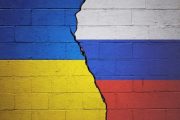
SINGAPORE — South Korea and the United States will conduct tabletop exercises in February 2023 in a bid to tackle the North’s nuclear threats, South Korea’s defense minister said on Wednesday.
Since 2017, U.S. and South Korean officials have cautioned that the North could be preparing for its first test of a nuclear device. Nuclear-armed North Korea fired a record number of missiles last year, including intercontinental ballistic missiles (ICBMs) that can target the U.S. mainland.
“We’re planning to hold tabletop exercises in February between defense officials on operating means of extended deterrence under the scenario of North Korea’s nuclear attacks,” South Korean defense minister Lee Jong-sup told a news conference. Then in May 2023, both countries’ militaries will launch separate tabletop exercises for the first time, which will be “far more concrete and substantive” than the February program for policymakers, he said.
Lee’s revelations came after the defense and foreign ministries organized a New Year policy briefing for President Yoon Suk-yeol, discussing ways to enhance South Korea’s capability to tackle the North’s evolving nuclear and missile threats.
Since taking office in May last year, Yoon has been trying to raise confidence in U.S. extended deterrence, such as American military capability, particularly nuclear forces, as a means of deterrence for Pyongyang.
Lee remarked that Washington is now willing to “drastically expand” the scope of classified information to be shared, and to “reflect much more” of Seoul’s views in planning and enforcement. “There is a shared need for it between the two sides, given that North Korea’s nuclear threat has become serious not only to South Korea but also to the United States,” he said, adding that both countries will also ramp up their yearly joint field training this year, including conducting inaugural division-level landing drills.
Moreover, South Korea hopes to unveil its first spy satellite this year and four more by 2025, he added, as part of a campaign to boost the country’s intelligence, surveillance, and reconnaissance capability
Yoon promised to nurture “peace through strength,” lambasted his progressive predecessor’s North Korea policy, and asked the military to be on alert to respond to hostilities, his office announced. “A peace that’s based on others’ good faith and therefore unsustainable, we call it fake peace. We will never pursue a war of aggression, but we must be fully prepared to strongly exercise our right to self-defense against provocations that threaten our freedom and peace.”
In December 2022, U.S. Forces Korea (USFK) unveiled a space forces unit to better deal with the North’s provocations. U.S. Space Forces Korea is the second overseas space component of the U.S. Space Force and is entrusted with keeping tabs on incoming missiles and boosting the military’s overall space capability.
The USFK commander, General Paul LaCamera, remarked that the unit would boost the U.S. capability to maintain peace and security on the Korean peninsula and in Northeast Asia. “The U.S. military is faster, better connected, more informed, precise and legal because of space,” he said at a ceremony at Osan Air Base in the South Korean city of Pyeongtaek.
South Korea’s air force established its own space unit the same month to enhance its space power and operation capability alongside the U.S. Space Force.
U.S. officials have voiced fears over increasing security activity in space by major rivals, such as China’s buildup of hypersonic weapons and Russia’s test of anti-satellite technology in 2021.
Beijing has cautioned Seoul against joining a U.S.-led global missile shield, and protested the THAAD (Terminal High Altitude Area Defense) U.S. missile defense system based in South Korea. Seoul’s Defense Ministry said the creation of the U.S. space component had no connection with South Korea’s participation in current missile defense programs.
About 28,500 U.S. troops are based in South Korea under a mutual defense treaty initiated after the 1950 to 1953 Korean War resulted in an armistice, not a peace treaty.
In August 2019, Kim Jong Un, leader of North Korea, rebuked then-U.S. President Donald Trump for conducting the scheduled joint military exercises with South Korea.
“I am clearly offended, and I do not want to hide this feeling from you,” Kim wrote in a letter. “If you do not think of our relationship as a stepping stone that only benefits you, then you would not make me look like an idiot that will only give without getting anything in return.”
The letter signaled the end of a tumultuous period in U.S.-North Korean relations that entailed Trump’s comments to inflict “fire and fury like the world has never seen” upon the East Asian communist dictatorship and resulted in a slate of meetings between both leaders. Nonetheless, after having failed to obtain the sanctions relief and security guarantees he was seeking, Kim has concentrated instead on overhauling his nuclear weapons program instead of following the diplomatic path.
Notwithstanding stringent international sanctions and extreme self-imposed isolation during the Covid-19 outbreak, observers contend, North Korea has made drastic progress with its military aims, indicating that arrangements for the security of South Korea, Japan, and the U.S. could soon be out-of-date.
“North Korea is on its way to perfecting its nuclear programme,” said Sue Mi Terry, a former CIA analyst who directs the Asia program at the Wilson Center think tank in Washington. “I think there is a serious risk that a North Korean crisis could erupt while we are all focused on China potentially invading Taiwan.”
Meanwhile, Kim is showing no signs of relenting in his nuclear efforts. In his New Year’s address, he announced he would “exponentially increase” nuclear weapons production in 2023 and pointed out his willingness to use his nuclear arsenal for both offensive and defensive purposes.
On Jan. 1, North Korea test-fired its “super-large multiple launch rocket system,” which Kim has boasted can strike anywhere in South Korea.
These lower-yield weapons “can be used more precisely to target specific enemy assets such as ports, airfields, ships, or concentrations of troops,” said Ankit Panda, a nuclear weapons specialist at the Carnegie Endowment. Their threshold for use is much lower than for ICBMs, he continued, and the decision to use them is also more likely to be assigned to field commanders, “increasing the risk of an accident, miscommunication or miscalculation resulting in nuclear use.”
Due to Pyongyang’s significant strides in weapons development and its implementation of a more bellicose nuclear doctrine, Seoul and Tokyo have sought greater security guarantees from Washington, which replied with more patrols of nuclear-capable military assets on and around the Korean peninsula. The Biden administration has also threatened to “end” the Kim regime if it ever used nuclear weapons.
That being said, some analysts fear that such tit-for-tat measures risk the chances of confrontation.
“Every time the Americans do something to reassure the South Koreans that they are prepared to defend them, they weaken their assurances to the North Koreans that they are not preparing to attack them,” said Dr. Sheen Seong-ho, a professor of international security at Seoul National University. “The North Koreans are sending the message that they are not prepared to go down without a fight.”
Some critics think the Biden administration has not focused enough on North Korea, especially as it remains preoccupied with Ukraine and China. A senior U.S. official said the administration has made efforts at discussions with North Korea, but the response from Pyongyang since Biden came to power could be summarized as “pretty much radio silence.”




